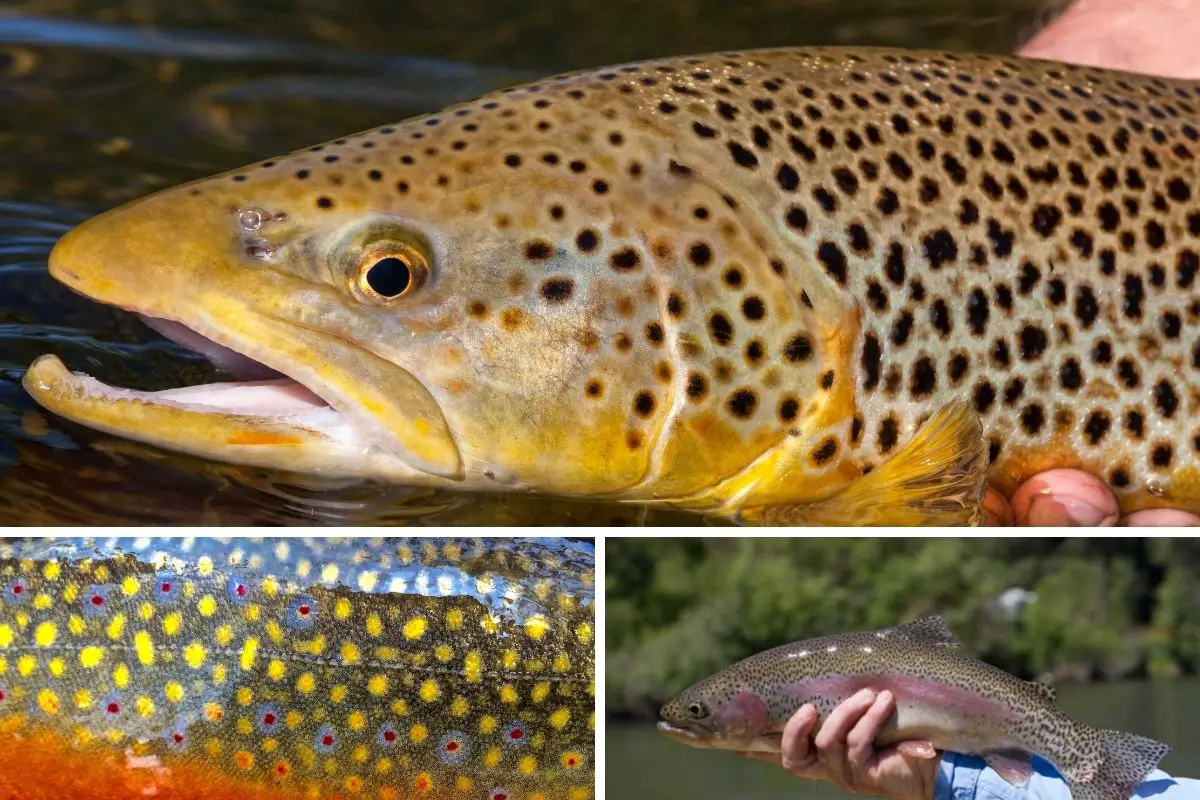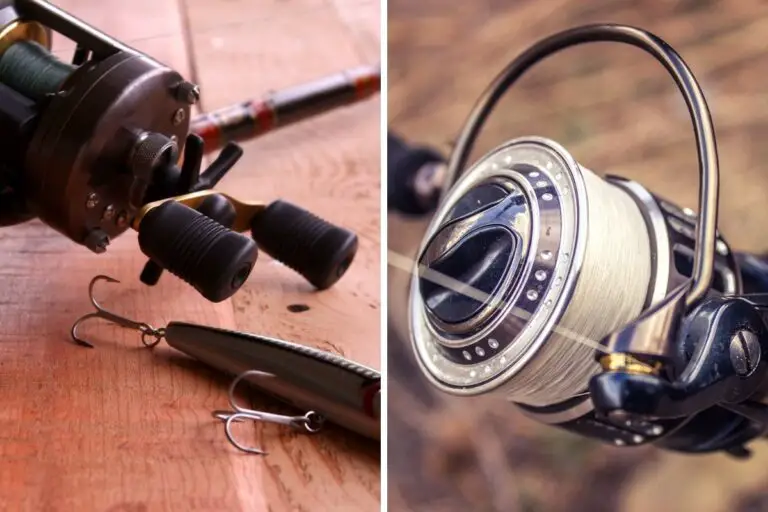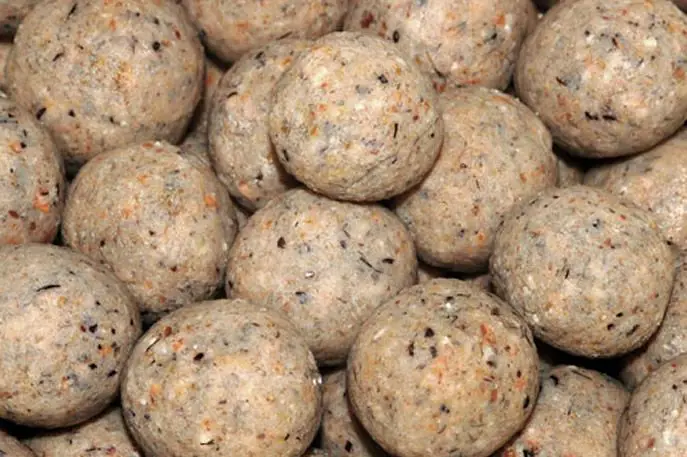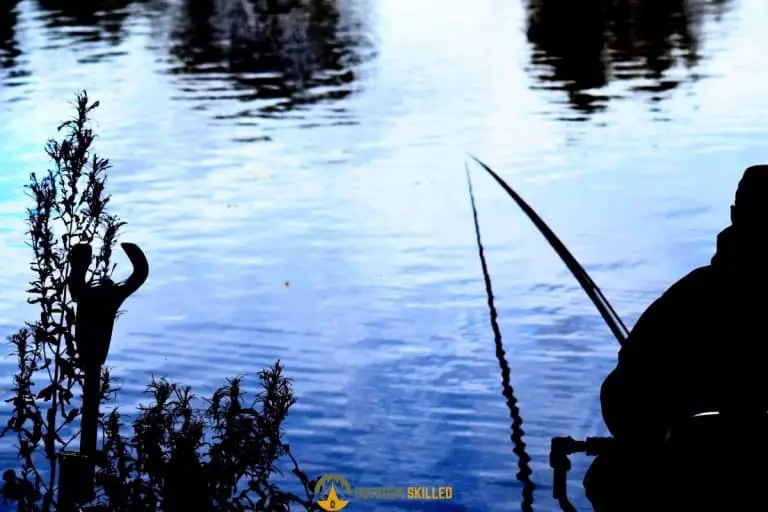Why Do Trout Turn Black? Do They Die? Can You Eat Them?
It’s common for trout fish to change color throughout their life and they might even turn black. Sometimes this happens because of harmless reasons, but other times it could be an indicator for a more severe problem.
So, why do trout turn black? Trout turn black for various reasons. The main reason is that they’re going through their spawning period. The change in color could also be related to their genetics, age, or diet. On rare occasions, trout turn black due to a problem in the water quality such as a severe increase in ammonia levels.
Keep reading to learn more about the reasons why trout change colors and what effect it could have on the fish. You can also go learn what colors do trout see best here and how to exploit these facts to get better catches more quickly.
Table of Contents
What’s The Natural Color of Trout Species?

There are several types of trout. The most common species throughout the United States are Rainbow Trout, Steelhead Trout, Cutthroat Trout, Brown Trout, Brook Trout, Lake Trout, and Speckled Trout.
Although trout species have very similar features, each one of them has distinctive colors and markings that will help tell them apart.
| Trout Species | Colors |
|---|---|
| Rainbow Trout | They’re mainly silver with flashes of pink and green along the side of their body. They spend their entire life in freshwater. |
| Steelhead Trout | They’re also silver and with flashes of pink and green along the side of their body, however, they start out their life in freshwater then migrate to saltwater. |
| Cutthroat Trout | They’re mainly brown and they have an orange-red colored gill plate. |
| Brown Trout | They’re brown with a yellowish belly. They’re covered with multiple black spots from head to tail. |
| Brook Trout | They’re dark green and brown with a red belly. They’re covered with yellow spots from head to tail. |
| Lake Trout | They’re dark olive green and covered with yellow spots. They usually grow larger than all other trout species. |
| Speckled Trout | They’re silver with a white belly. They are covered with black spots from head to tail. |
You can learn more about each species and see images for each in my Trout Fishing Basics guide. Make sure to also scroll to the end to check what you will need to become instantly better at fishing for trout.
Why Do Trout Change Color?
It’s completely natural for trout to change their color. It’s a phenomenon that happens with many fish species and it happens for several reasons.
Understanding the reasons why trout change color might help you determine which fish to consume. So, let’s take a closer look at these reasons:
Age and Genetics
The most common reason for trout changing color is simply maturing, the same way humans change appearance as they grow in age.
These color changes are mainly genetic in nature so it’s hard to predict whether trout will retain their original color over time.
Diet
The inner layer of trout’s skin contains color cells called chromatophores. These color cells produce and store certain chemicals that are responsible for different color pigments in trout.
- Some cells produce melanin which is responsible for the brown or black color in trout.
- Some cells store carotenoids which are responsible for red, orange, and yellow colors in trout.
- Some cells store iridophores which contain crystalline deposits that reflect and bend light to give the silver color in trout.
The production and storage of these color pigments mainly depend on the trout’s diet. As long as trout are maintaining a normal healthy diet, they should be able to retain their original color.
Spawning
As trout mature and start spawning, they begin to undergo some changes in their behavior as well as their color.
During their spawning period, trout will get more aggressive and their color will shift from their original silvery or brown color to a much darker tone.
Water Quality
The chemical components of some water sources are tested frequently to check for any irregularities that might affect the fish’s health.
Some trout species migrate from freshwater to saltwater. The difference in mineral contents in the water where the trout fish were born and in the water they migrated to can have a significant effect on their color.
In areas with very hard water, you may see black spots appear on your fish’s skin. These are benign mineral deposits and will not hurt your fish.
On rare occasions, there could be a more serious problem with water conditions that cause trout to turn black. This problem is known as ammonia burn and it mostly occurs in closed tanks but that doesn’t mean it’s impossible to occur in open water where trout live.
Ammonia is a waste product that’s excreted by fish through their gills. It can be quite toxic, so it needs to be broken down by environmental bacteria into nitrite then this nitrite needs to be broken down further into nitrate which is the least toxic compound.
If the ammonia levels become too high in the water, whether it’s due to lack of bacteria or overfeeding the fish, it could cause chemical burns to trout fish which results in them turning black.
Will Trout Die After Turning Black?
Trout getting darker in color or turning black is natural and it doesn’t always mean that the fish will die. It all depends on the main reason behind the change of color.
If trout change color due to natural reasons such as growing in age or going through spawning, then it’s very unlikely that the trout will die. However, they might not always change back to their original color.
If trout change color due to ammonia burn, then the chances of their recovery will depend on the levels of ammonia in the water.
If they become lethargic after turning black, there’s little chance that they will recover and they will eventually develop more symptoms that will lead to their death. If they’re still active after turning black, then the chances of a full recovery are a lot higher as this means the ammonia poisoning isn’t very severe
Related Questions
Is It Safe to Eat Trout Fish That Turned Black?
It’s not safe to eat trout fish that turned black because they would have high levels of ammonia in their bodies which can be very poisonous for humans to consume. If trout change colors due to natural reasons such as aging or spawning, it will not affect their taste and they will be safe to eat after being cleaned and cooked properly.
When Do Trout Spawn?
Different species of trout spawn during different times of the year. Brown and lake trout start spawning during the fall, from late September to early November, when the water temperature is cool. While rainbow trout and the rest of the trout species often spawn throughout spring and early summer when the water temperatures rise.
Helpful Resources
TROUTS AND SALMONS – Pennsylvania Fish & Boat Commission
Level Up your Trout Fishing
- Gear up with the best Trout Fishing Rods here
- Check out the best Trout Fishing Reels here
- Find the best fishing lines for Trout here
- Get larger trouts faster with these trout baits that NEVER fail
- Learn about hook sizing for trout here, and the best baits for rainbow trout here.
- You can’t go wrong with these powerbaits for trout.
- Get larger steelheads with these baits
- These Steelhead Lures are the experts’ picks for the year, and it’s easy to see why






![How to Keep Trout Fresh After Catching [For As Long As Possible]](https://outdoorskilled.com/wp-content/uploads/2021/11/fresh-trout-768x512.jpeg)

